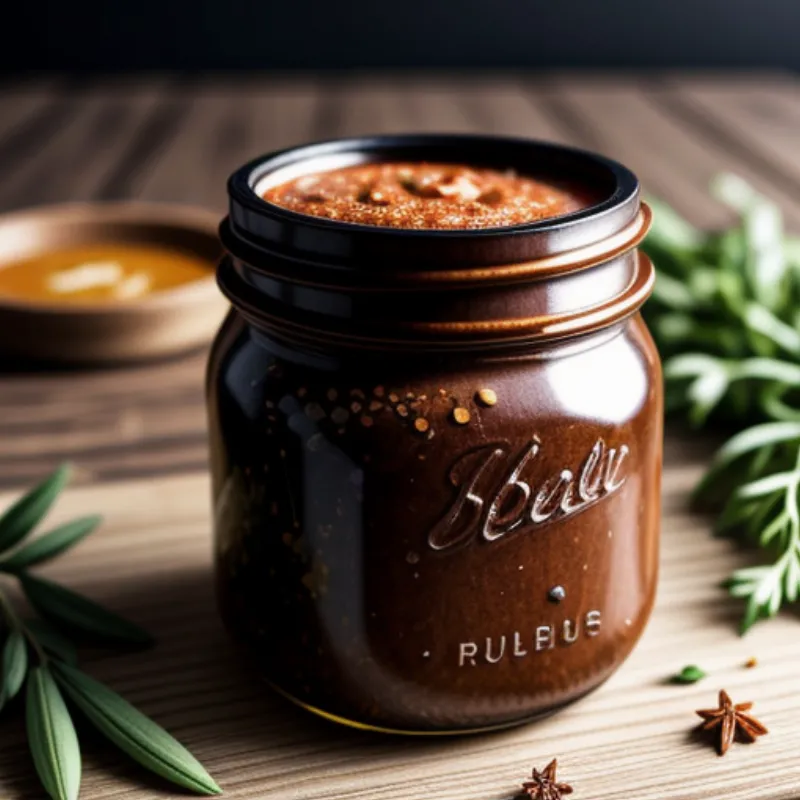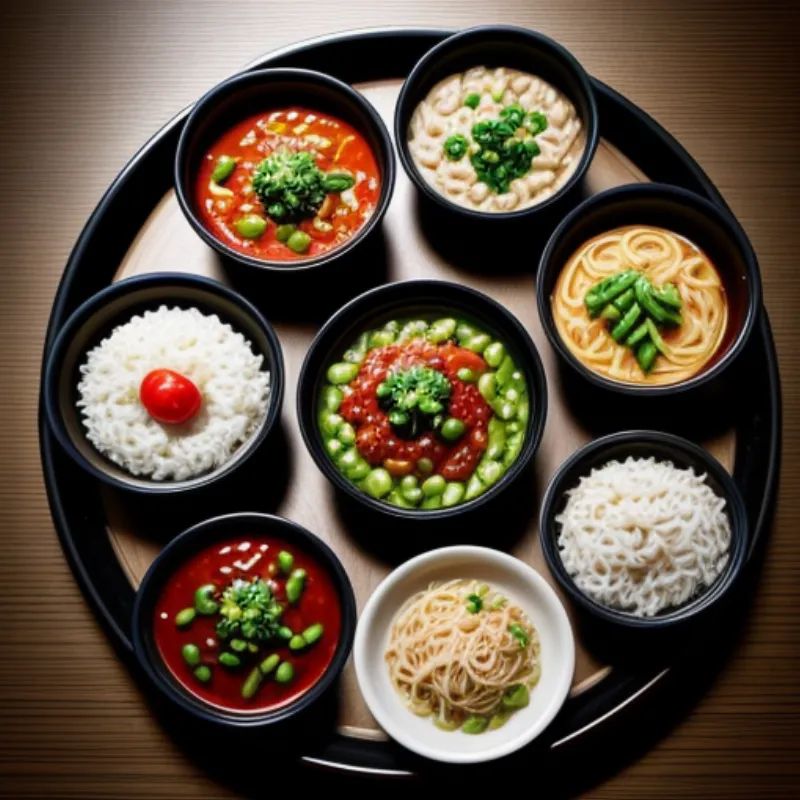Budu sauce, a pungent and savory fermented fish sauce, is a staple in Southeast Asian cuisine, particularly in Malaysia and Indonesia. With its unique umami flavor profile, it adds depth and complexity to any dish it graces. If you’re looking to elevate your culinary game and explore the bold flavors of Southeast Asia, then learning How To Make Budu Sauce is a must!
A Journey into the Heart of Budu Sauce
My first encounter with budu sauce was in a bustling street food market in Kuala Lumpur. The air was thick with the aroma of spices and sizzling food, and amidst the vibrant chaos, I stumbled upon a vendor selling a dark, mysterious sauce. Intrigued, I took a leap of faith and ordered a plate of nasi lemak, a fragrant coconut rice dish, drizzled generously with this enigmatic condiment. That first bite was a revelation! The budu sauce, with its intense savory and slightly sweet notes, transformed the dish, leaving me craving for more.
Making your own budu sauce at home might seem like a daunting task, but I assure you, it’s a surprisingly simple process. Plus, the satisfaction of creating this flavor-packed condiment from scratch is incredibly rewarding. So, are you ready to embark on this culinary adventure with me?
Ingredients: Unveiling the Magic
The Star of the Show
- Anchovies: 2 pounds (approximately 1 kilogram) of fresh anchovies, cleaned and gutted. Look for anchovies that are firm to the touch and have a bright, silvery skin.
Flavor Enhancers
- Salt: 1 cup (approximately 220 grams) of coarse sea salt. This is crucial for the fermentation process and contributes to the sauce’s unique flavor.
- Sugar: 1 tablespoon (approximately 12 grams) of granulated sugar (optional). This helps to balance the saltiness and adds a touch of sweetness.
Variations: A World of Flavors
While the basic recipe for budu sauce is fairly straightforward, there are countless variations depending on the region and personal preferences. Some people like to add ingredients like:
- Tamarind: This adds a tangy and sour note to the sauce.
- Chili Peppers: For those who like it spicy, adding chilies during the fermentation process can create a fiery kick.
- Garlic and Ginger: These aromatic ingredients can enhance the depth and complexity of the sauce.
Tools of the Trade
- A large glass jar: This will be your fermentation vessel. Ensure it’s clean and sterilized to prevent any unwanted bacteria from spoiling your sauce.
- Cheesecloth or muslin cloth: This will be used to cover the jar during fermentation.
- A weight: This is optional but helps to keep the anchovies submerged in the brine.
Crafting the Budu Magic: A Step-by-Step Guide
-
Preparing the Anchovies: Thoroughly rinse the anchovies under cold water and pat them dry. Remove any remaining scales or bones.
-
Layering the Goodness: In a large bowl, combine the anchovies and salt. Gently massage the salt into the fish, ensuring they are evenly coated.
-
The Fermentation Journey Begins: Transfer the salted anchovies to the sterilized glass jar. Press them down firmly to remove any air pockets. Leave about 2 inches (5 centimeters) of space at the top of the jar.
-
Creating the Anaerobic Environment: Cover the mouth of the jar with cheesecloth or muslin cloth and secure it tightly with a rubber band. This allows for airflow while preventing insects from getting in.
-
Patience is Key: Place the jar in a cool, dark place, away from direct sunlight. The fermentation process can take anywhere from 6 to 12 months, depending on the ambient temperature. During the first few weeks, you’ll notice bubbles forming in the jar, which is a good sign that fermentation is taking place.
-
The Grand Finale: After the fermentation period, the budu sauce will have a dark brown color and a pungent aroma. Strain the sauce through a fine-mesh sieve, discarding the solids. Transfer the strained sauce to a clean bottle or jar.
 Budu sauce in a jar
Budu sauce in a jar
Tips and Tricks for Budu Perfection
- Salt is Your Friend: Don’t be afraid to use a generous amount of salt during the fermentation process. Salt acts as a natural preservative and is essential for developing the unique flavor of budu sauce.
- Temperature Matters: The ideal temperature for fermenting budu sauce is between 70°F and 80°F (21°C and 27°C). If the temperature is too low, the fermentation process will slow down. If it’s too high, there’s a risk of spoilage.
- Taste Test Along the Way: As the budu sauce ferments, don’t hesitate to taste it occasionally (using a clean spoon!). This will help you gauge the flavor development and determine when it’s ready to your liking.
Serving Suggestions: A Culinary Adventure Awaits
The versatility of budu sauce knows no bounds. Here are some ideas to tantalize your taste buds:
- Drizzle it: Enhance the flavor of your favorite stir-fries, noodles, and rice dishes with a drizzle of budu sauce.
- Dip and Delight: Use it as a dipping sauce for fresh vegetables, spring rolls, or grilled meats.
- Flavor Enhancer: Add a spoonful or two of budu sauce to soups, stews, and curries for an extra layer of umami.
 Budu sauce served with food
Budu sauce served with food
Preserving Your Masterpiece: Keeping the Flavor Alive
Once your homemade budu sauce is ready, store it in an airtight container in the refrigerator. It can last for several months, with the flavor deepening over time.
Conclusion: A Flavorful Journey to Southeast Asia
Making your own budu sauce is a culinary adventure that allows you to explore the bold and complex flavors of Southeast Asian cuisine. While it requires patience, the end result is a flavor-packed condiment that will elevate your cooking to new heights.
So, gather your ingredients, embrace the fermentation process, and prepare to be amazed by the unique and delicious world of budu sauce!
Have you ever tried making fermented sauces at home? Share your experiences and tips in the comments below!
For more culinary adventures and easy-to-follow recipes, explore our website!
